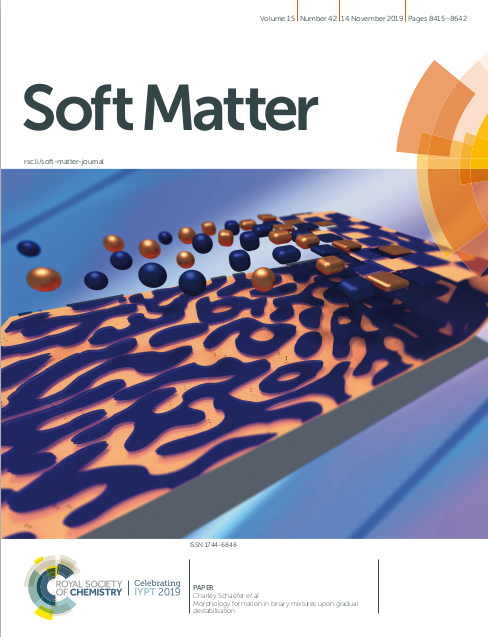Morphology formation in binary mixtures upon gradual destabilisation
Published in Soft Matter, 2019
Cite: C. Schaefer, S. Paquay, Tom C.B. McLeish. "Morphology formation in binary mixtures upon gradual destabilisation." Soft Matter. Soft Matter, 15, 8450-8458 (2019) https://doi.org/10.1039/C9SM01344J
Organic solar cells consists of a thin film of about 100 nanometers thickness (a ten thousandth of a millimeter), which consists of an intercalated structure of electricity conducting polymers and a fullerene molecules. The layer thickness and internal structure are formed by starting from a solution and removing the solvent in a controlled way. Small changes in the solvent quality and the evaporation conditions lead to enormous variations in the final structure in a way that is poorly understood. Various mechanisms were identified (uniform liquid-liquid phase separation (LLPS), stratified LLPS, polymer precipitation by liquid-solid phase separation [LSPS]). However, controlling which mechanism, and how structures emerge within each mechanism, are subject to trial-and-error experimentation. In this work, I investigated structure formation within the class of uniform LLPS.
Uniform LLPS is usually described using phenomenological models (see Macromolecules 2016) in constant conditions (with a fixed concentration and temperature). While these models are often used in non-fixed conditions (i.e., during solvent evaporation the concentration increases), I showed these models qualitatively fail at the early stages of structure formation (Phys Rev Lett 2018), which are discussed in more detail in this Soft Matter paper.
For my work on other mechanisms of phase separation than uniform LLPS, see my research in Schaefer et al, Macromolecules 2017 on stratified LLPS, and my contribution in van Franeker et al, JACS 2015 on LSPS.
Current status: The insights into each of the mechanisms mentioned above has significantly improved, however, the crossovers from one mechanism to the other remain poorly understood. In the meanwhile, new challenges have emerged following the development of ternary organic solar cells, where several phase-separation mechanisms occur simultaneously; see my work in collaboration with the group of Prof. Harald Ade for more info.

